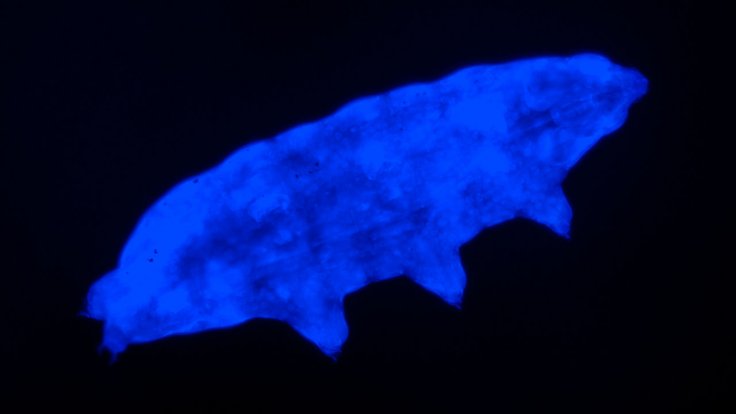Water bears or tardigrades are practically unkillable. The microscopic aquatic organism can survive extreme temperature, pressure, the vacuum of space and even extreme radiation. All the known organisms are susceptible to those conditions. Scientists have now found a new tardigrade species that can survive extreme ultra-violate (UV) radiation using a florescent shield.
The discovery was rather accidental. As the scientists at the Indian Institute of Science (IISc) searched their campus in Bengaluru, India for water bears, they found a different species in moss on a concrete wall.
The researchers exposed the tardigrades to extreme UV radiation by using a germicidal UV lamp in the lab. Just 1 kilojoule per square meter was enough to kill bacteria and roundworms in five minutes. Hypsibius exemplaris tardigrades another water bear species also succumbed to the UV after 15 minutes.

But when they exposed a reddish-brown water bear species with the same UV radiation, all of them survived. Curious with the discovery, they increased the doses by four times and the result was similar. About 60 percent of them survived for more than a month.
Paramicrobiotus BLR
There is a widespread effect of UV radiation. It can damage cells and even destroy DNA. In the study published in the journal, Biology Letters, the scientists — Harikumar R Suma, Swathi Prakash and Sandeep M Eswarappa — named the species Paramicrobiotus BLR. While exposing the new species to UV radiation, the reddish-brown tardigrades turned blue.
The researchers found that it was Fluorescent pigments that turned the UV ray to harmless blue light that protected them. In those Paramacrobiotus with less of the pigments, could not bear the radiation and died after 20 days of exposure.

Realizing the potential of the fluorescence, the scientists extracted the pigments and added the solution to a plate with Hypsibius exemplaris and other Caenorhabditis elegans (microscopic worms). The result was surprising. The fluorescence coating was actually working. All the specimens had a higher survival rate with the coating.
Scientists believe the new tardigrades species developed fluorescence to endure the high UV radiation of southern India. During summer, the UV radiation ranges from 4 kilojoules to 10. "The fluorescent compound forms a 'shield' against UV radiation, protecting these tardigrades from its lethal effects. We speculate that Paramacrobiotus BLR strain has probably evolved this fluorescence mechanism to counter the high UV radiation," the scientists said.

What's Next?
Tardigrades or water bears are almost indestructible and scientists have conducted various experiments to check if their defense mechanism can be applied for human spaceflight. Previously, scientists exposed them to the vacuum of space and it survived.
Last year, the Beresheet spacecraft crash-landed on the Moon that contained tardigrades. Scientists speculate that they might have survived that as well considering their high endurance level.
As for the Paramacrobiotus BLR's UV radiation withstand capability, it can have real-life applicability. If scientists can find out the mechanism behind its high endurance, it can be used to coat space suits shield from UV. At least, a sunscreen lotion with tardigrade fluorescence won't be bad either. For now, scientists are trying to find ways to replicate their endurance.









